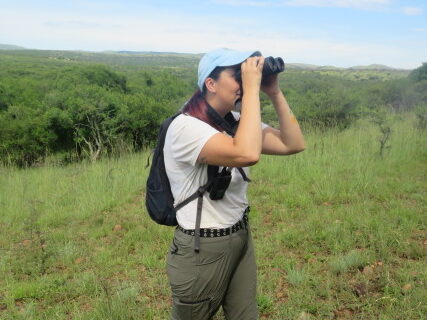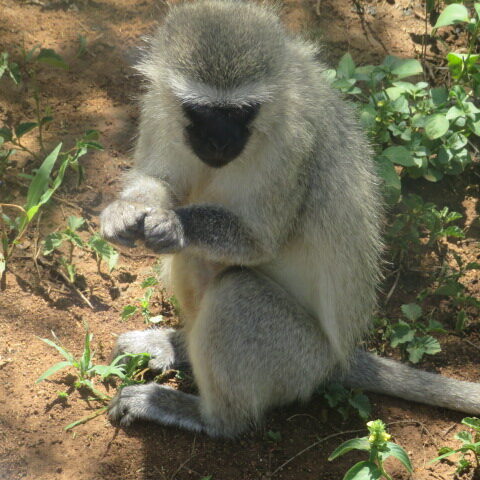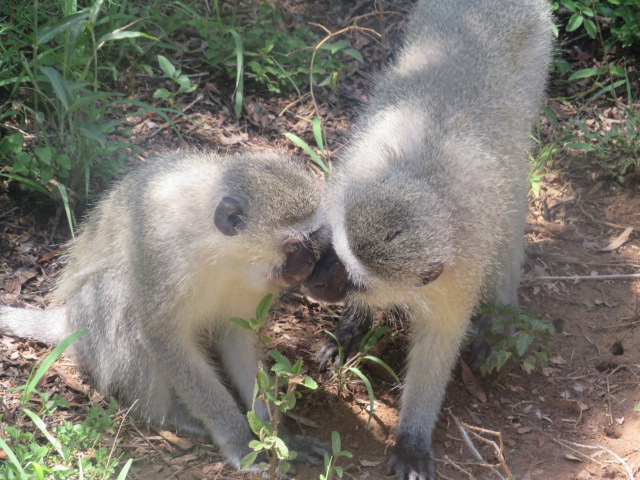This project is in collaboration with iNkawu Vervet Project (IVP),
located in the Mawana Game Reserve, South Africa.
Data Collection:
- wild vervet monkeys – Chlorocebus pygerythrus – habituated to human presence
- from July to December (mostly dry/winter season)
- 6 days a week
- using binoculars, handwritten notes, voice and video recordings
- monkey troops: Baie Dankie (n=28) & Ankhase (n=16)
Observations of Food Evaluation
I recorded the frequency of behaviours. The wild vervet monkeys were observed without interference and continuously while they were feeding.
Description of the food item was recorded whenever possible: fruits, leaves, flowers, seeds, bark, gum, roots, fungi, arthropods, and unknown (all food items that could not be identified that were collected from the floor).
For this part of the study, a total of 44 monkeys were included in the analysis, each undergoing 1 hour of observation over a period of 4 months.

Familiarity of Food Items
To assess if highly familiar food items were inspected differently when their phenotype has been modified (either in colour, smell, or both).
The corn was coloured using commercial food colourants (blue, red, and green), or odorized with different commercial food odorants (vanilla, peppermint, and bitter almond). Then combinations of food colourants and odorants added together (red – vanilla, blue – peppermint and green – bitter almond). Each corn type was presented twice.
For this part of the study, a total of 10 monkeys participated in the experiment, as they had successfully learned how to open the box. This was done on my last month of data collection.

Ethogram:
This ethogram was used for both parts of the project.
| Senses | Food Related Behaviours | Muzzle Contact |
| Vision | Preparation | Initiating |
| Olfaction | Consumption | Receiving |
| Taste | Rejection | – |
| Touch | – | – |
How do Monkeys Prepare their Food?
Monkeys would take a food item and scrub it on a surface or on its own hands to clean it out or peel it off using their mouth and/or hands.


What is Muzzle Contact?
Muzzle contact (or mouth-to-mouth contact) is the act of one individual bringing its muzzle into very close proximity to another’s. This behaviour is thought to be a means to transfer olfactory and/or gustatory information about the edibility of food items between adult and infant primates.
